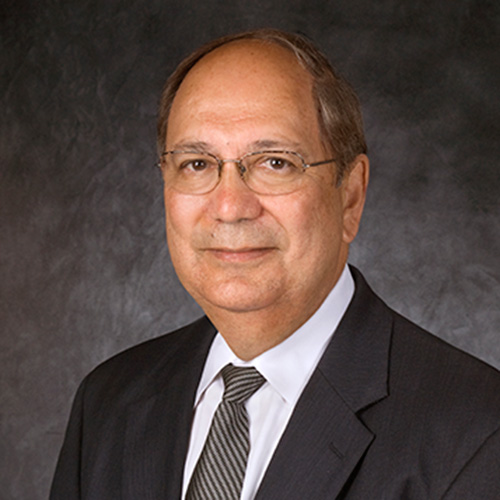Sumaya Completes Service as Results of Institute of Medicine Committee Released

For Immediate Release
February 10, 2004
Sumaya – Health Care Diversity Committee
Contact: Andrea Pool at (979) 458-0773
Office of Communications
The Texas A&M University System Health Science Center
https://tamhsc.edu
Sumaya Completes Service as Results of Institute of Medicine Committee Released
Fewer than one in every 20 dentists and physicians in the United States are African-American. Only two percent of registered nurses and 3.5 percent of physicians are Hispanic. While many initiatives have focused on motivating and preparing minorities to enter health professions, less attention has been paid to reducing institutional and policy-level barriers to minorities entry into these careers.
In The Nations Compelling Interest: Ensuring Diversity In Health Professions, a new report from the Institute of Medicine (IOM) of the National Academies, recommends actions that health professions schools, accreditation bodies, health care organizations, and state and federal governments should take to make it easier for minority students to pursue health careers and increase the diversity among care providers. The report can be found on the IOMs web site at https://www.iom.edu.
Specific issues addressed in the report include:
· Admissions policies and practices of health professions education institutions
· Public (e.g., state and federal) sources of financial support for health professions training
· Standards of health professions accreditation pertaining to diversity
· The institutional climate for diversity at health professions education institutions
· The relationship between diversity and community benefit
Ciro V. Sumaya, M.D., M.P.H.T.M., dean of the School of Rural Public Health (SRPH) at The Texas A&M University System Health Science Center, served on this committee. The only member selected from Texas, Sumaya was honored to be part of the group. Reflecting the population is key, he said. Minorities already face difficulty gaining access to care. Access to education should not be another barrier. Getting more minorities into health provider positions eliminates a principal barrier to care.
The IOM in Washington, D.C., at the request of the W.K. Kellogg Foundation, created the national study committee to examine and recommend the institutional and policy strategies for increasing the diversity of the U.S. health care workforce. With the completion of this report, the committees work is finished.
Appropriate to the topic, Sumaya is the dean of a school of public health that boasts the second highest number of Hispanic minority students, second only to the University of Puerto Rico School of Public Health. The number of African-American students at SRPH also approximates that of the Texas population.
We are committed to diversity in our student body, said Sumaya. It is important to reflect the makeup of the state of Texas, which is our constituency. As important, there is evidence demonstrating that increasing the number of minority health care providers means a great chance of increasing access to quality care for minorities as well, thereby benefiting the community as a whole.
Sumaya has previously been involved in various state and national efforts to diversify the health professions, particularly through leadership roles in the U.S. Department of Health and Human Services and the 1993 presidential-initiated Task Force on Health Care Reform.
The Texas A&M University System Health Science Center provides the state with health education, outreach and research. Its five components located in communities throughout Texas are Baylor College of Dentistry, the College of Medicine, the Graduate School of Biomedical Sciences, the Institute of Biosciences and Technology and the School of Rural Public Health.
-30-
Media contact: media@tamu.edu


